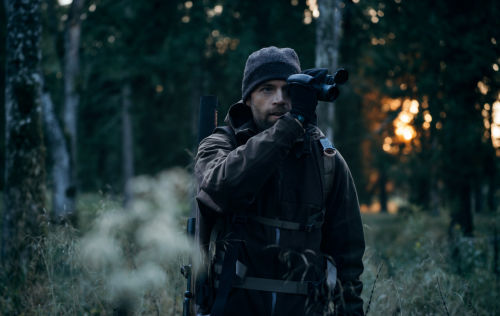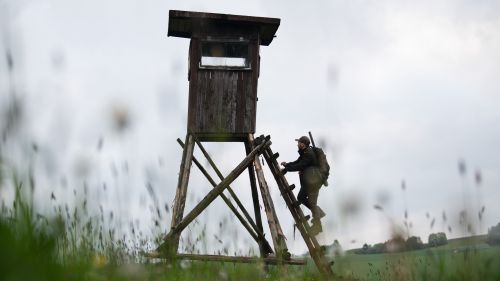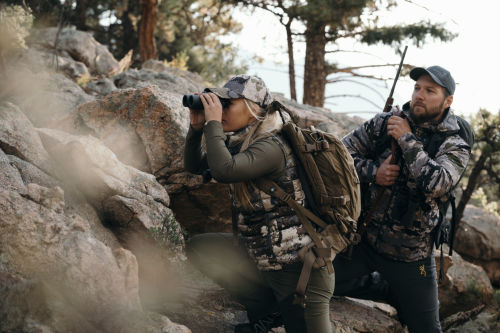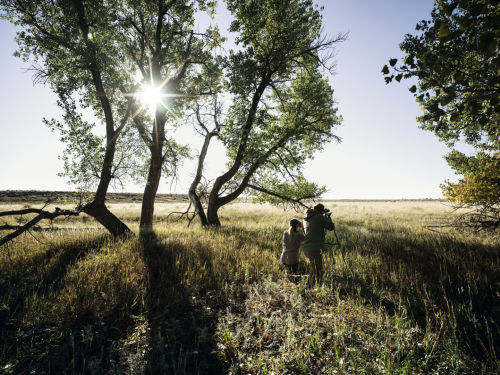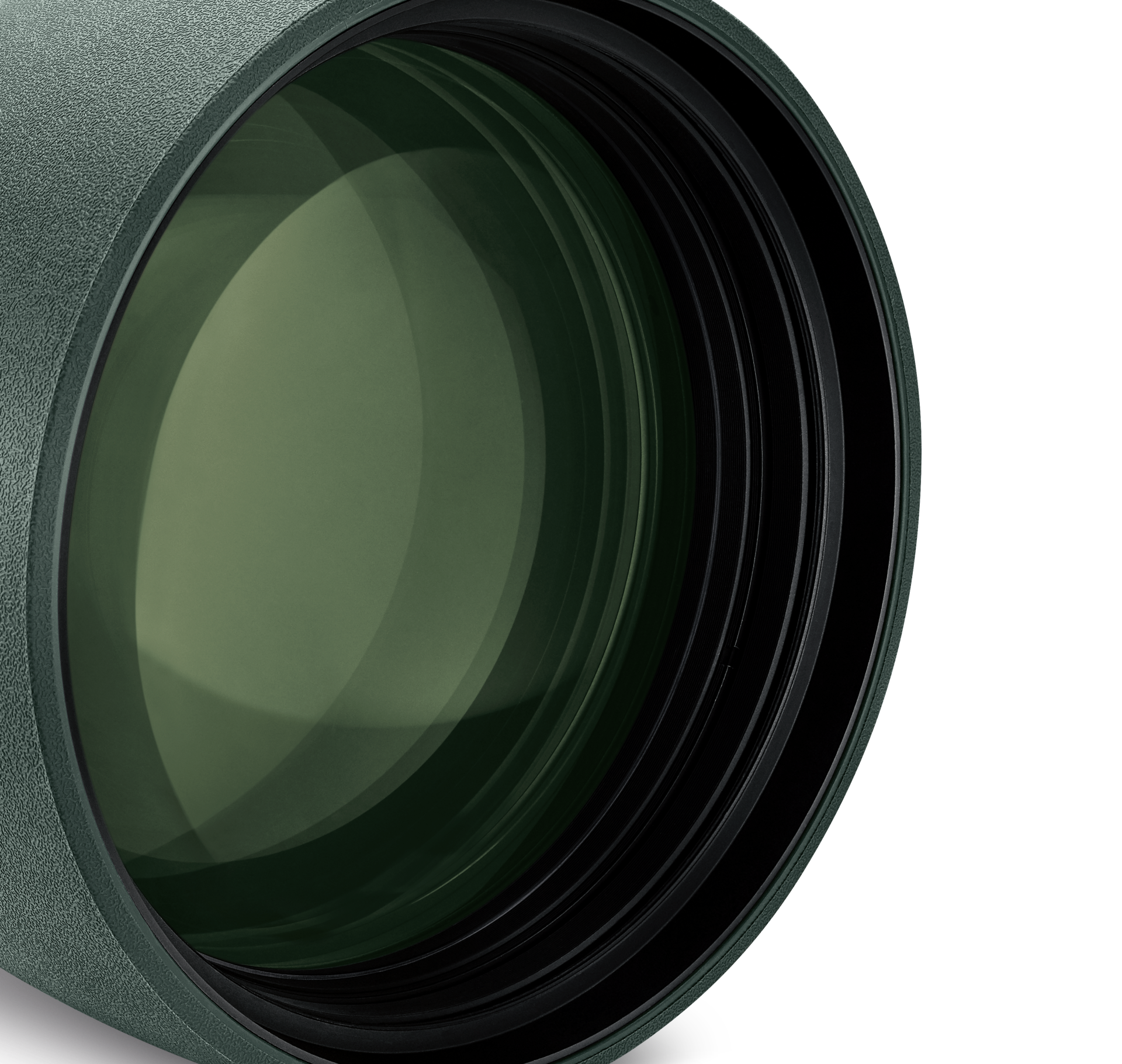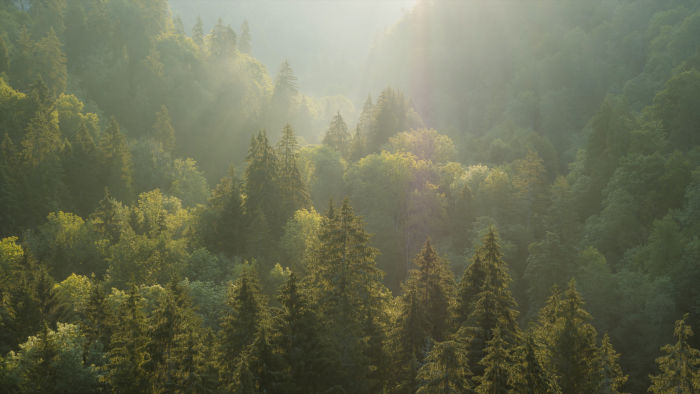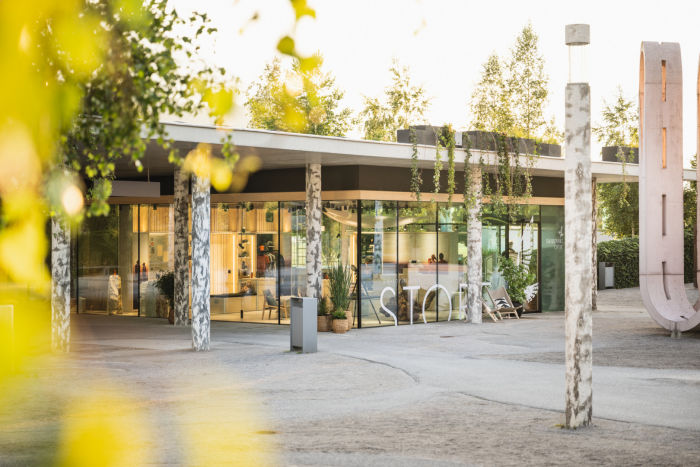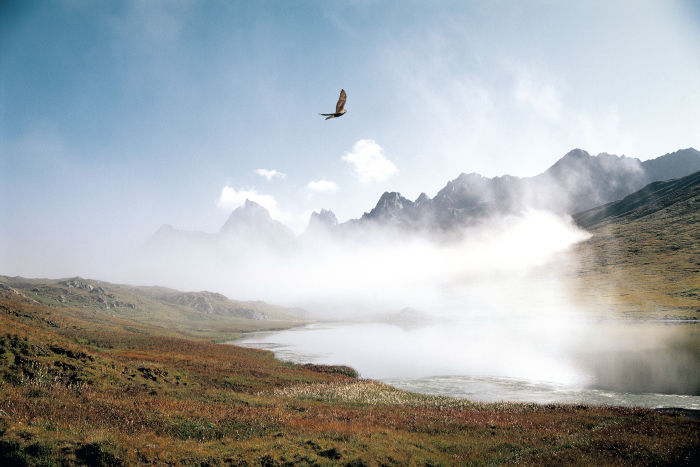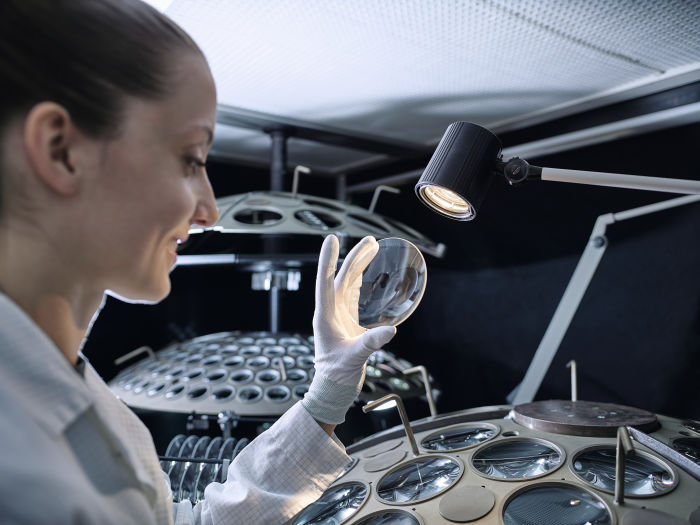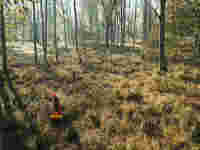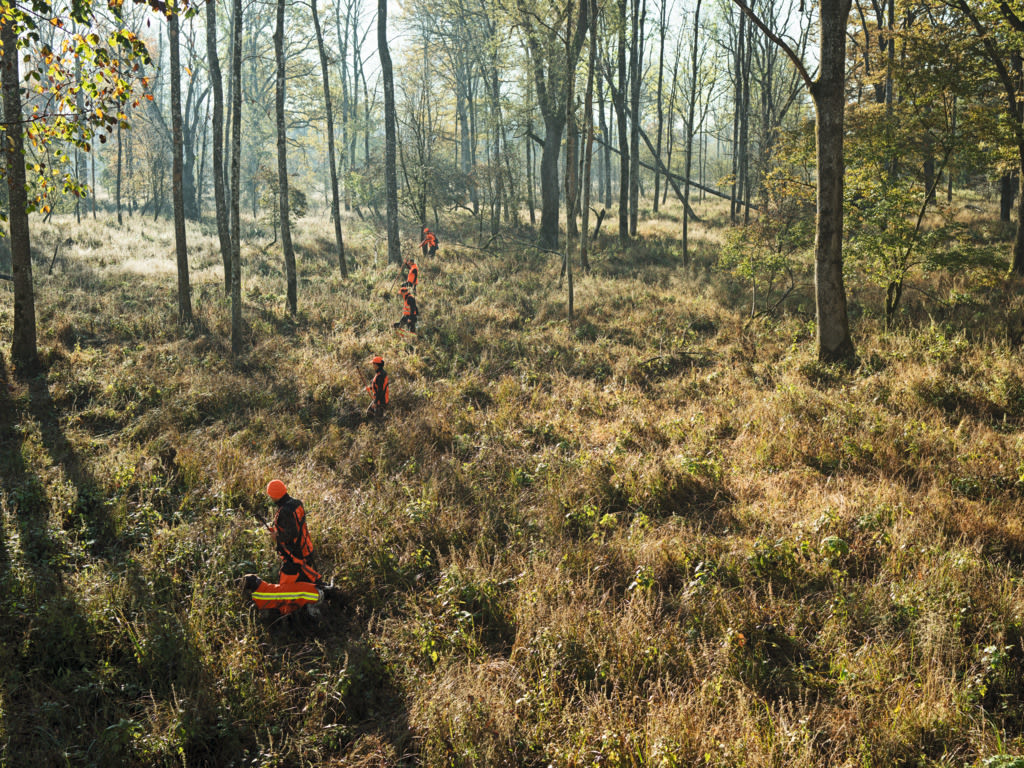The driven hunt - there is hardly a hunting method that fascinates us hunters in the German-speaking world more. What could be more beautiful than a herd of wild boar in an autumn forest covered with hoar frost? Certainly, other types of hunting have their charm too, but no other hunting method seems to fascinate us hunters as much as driven hunting.
What makes driven hunting so special?
The question why driven hunting fascinates us cannot be answered in general. After all, I cannot even answer this question for myself. Maybe, their many-faceted character make driven hunts so special. Or perhaps, it is the crucial social aspect that fascinates me most of all. A driven hunt can only be successful if all its participants, be it beaters, shooters or dog handlers, are working together and use all their senses.
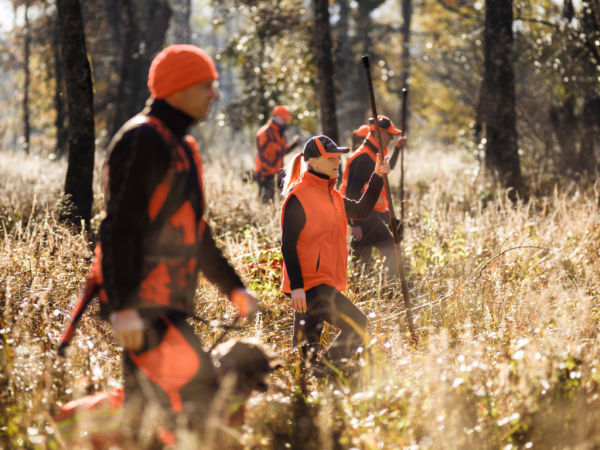
Hunting in a team
Only together will we succeed!
That is what makes a driven hunt something special: sharing a joint experience. While on an individual hunt you mostly hunt alone, the driven hunt is pure teamwork. The outcome depends on all of us equally. Without beaters and dog handlers, you cannot drive game out of the thicket. Tirelessly, they comb even the thickest of undergrowth and blackberry fields, always taking care not to lose anyone from sight or hearing and – in the best case – to keep the driver chain.
Dogs at work
For myself as a dog handler, the most beautiful thing is to see the dogs working during the hunt. When the dogs are pursuing the game barking loudly, the adrenaline level of every passionate hunter skyrockets. Everything else is faded out in a flash. The dogs bay and suddenly the blackberry bushes, which had been lying there so quietly before, begin to move everywhere.
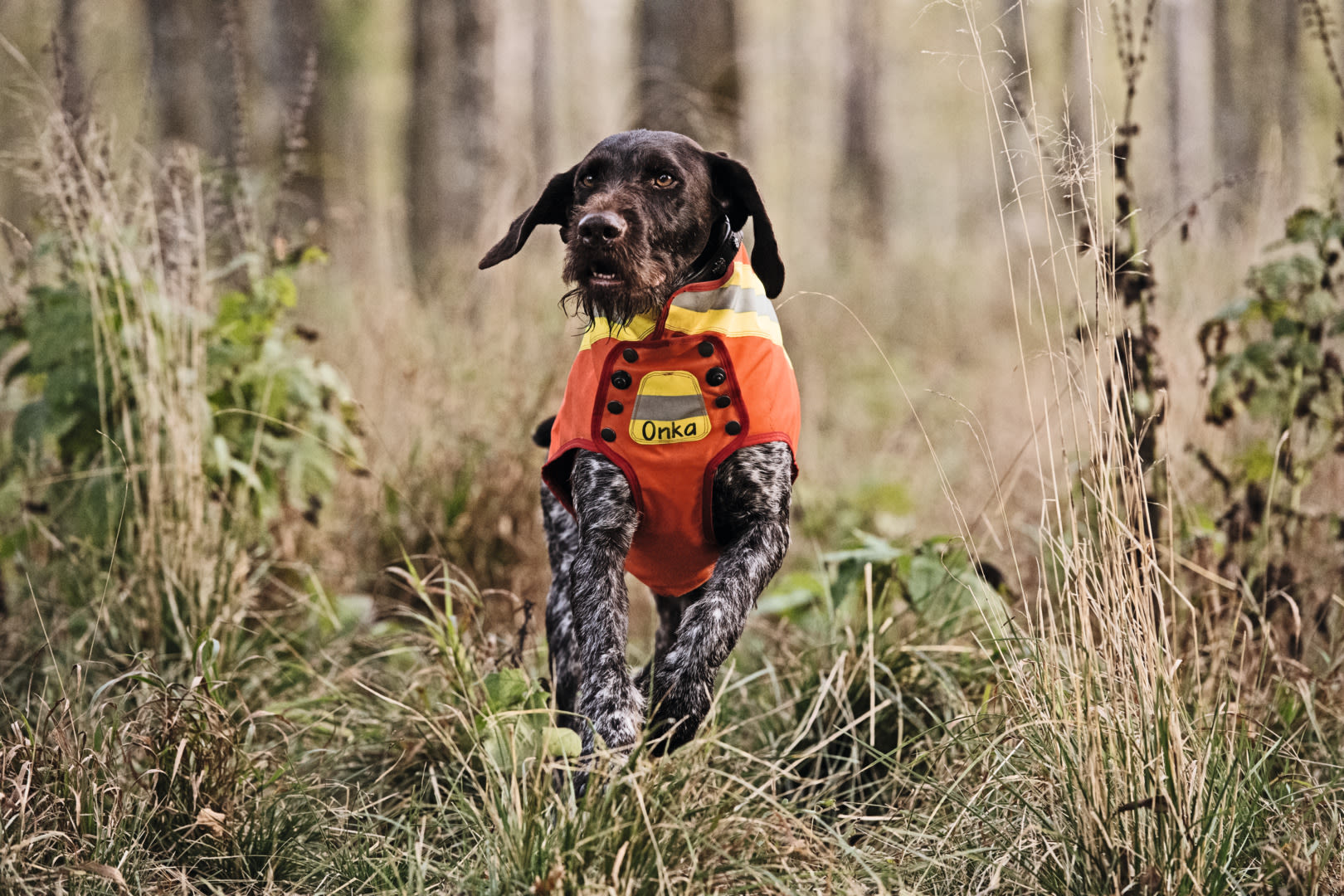
"Sooooooows!"
"Sooooooows!" sounds through the forest. Even today, I still get goose bumps at this moment. The herd breaks out of the thicket and the chain of beaters waits for the sows to reach the shooters. When the first shots are fired and all the dogs have returned unharmed, the joy is written all over everyone’s face – no matter whether they harvested any prey themselves or not. It is difficult to describe this sensation running through your body at this instance. Probably, the decreasing tension mixed with the pride about one's own work and the effort of the dogs gives you that amazing feeling of complete satisfaction.
Harvesting boars - but how?
The actual harvest is up to the shooters. Even before the chain of beaters starts moving and the dogs are unleashed, the shots move to their stands as quietly as possible. On most hunts, it is possible to start hunting the game passing by after reaching the defined post and making sure safety procedures are followed. Whenever it is my turn to be a shot, I always try to reach my post as quickly as possible. There is nothing more annoying than missing a chance to harvest game due to dawdling, because the prey passes by you before you arrive at the stand.

Safe behaviour
at the post
At the post, I first get an overview. Where are my neighbouring shooters and where are the zones in which shooting is not allowed (if any)? Where could game come from and where could I shoot at it? On posts with a wide field of view, I quickly measure the distance to a few prominent points in the terrain with my EL Range 10x42. When looking at strong sows or massive boars, one quickly underestimates the distance. However, if you know the exact distance, you won’t be tempted to try a risky shot. After all, the following principle also applies to driven hunts: only fire safe as well as clean shots in order to avoid animal suffering and to produce first-class food.
The advantages of driven hunt riflescopes
Once I have gained my overview, I load my weapon, correctly adjust the illumination on my Z6i and am ready. Especially on posts with little overview or narrow shooting lanes, I clearly prefer a driven hunt riflescope. The larger field of view compared to a conventional riflescope allows faster aiming. Even if several boars are approaching at the same time, like a herd of wild boars or red deer, driven hunt riflescopes like the Z8i 0.75-6x20, Z8i 1-8x24 or the Z6i 1-6x24 offer an excellent overview. They enable the shooter to identify the passing game through the scope (with your weapon pointing at it) and to harvest the right animal from the herd. Even though I always have binoculars with me on driven hunts in order to spot and identify game already from afar, there is often no time to look through the binoculars when suddenly game passes and the shooting sector is small. In such situations, I make use of the variable magnification of the riflescope. Up to now, this has always prevented me from releasing a wrong shot because the stag I thought had a 2-pointed antler actually turned out to have three points.
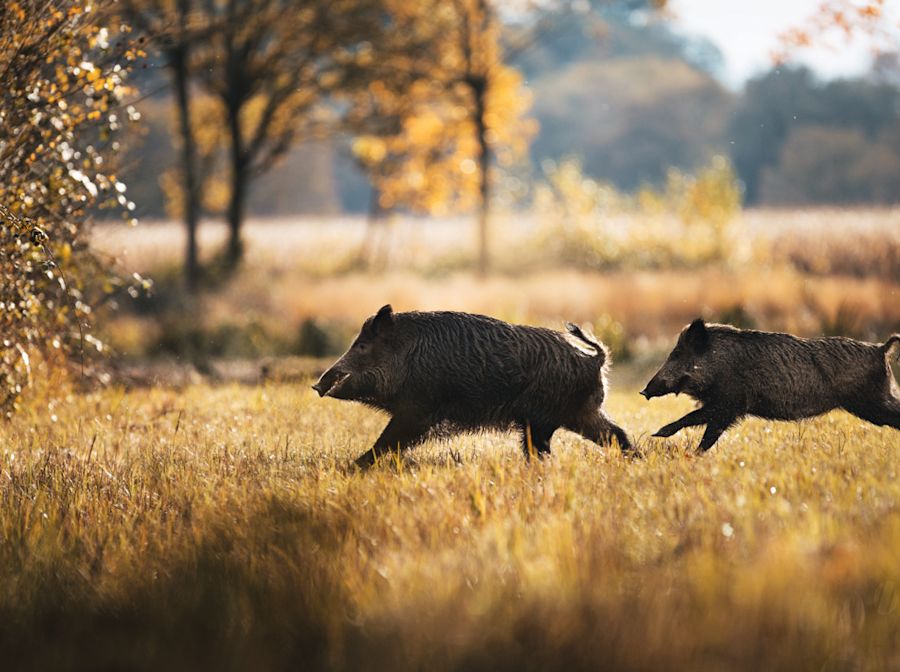
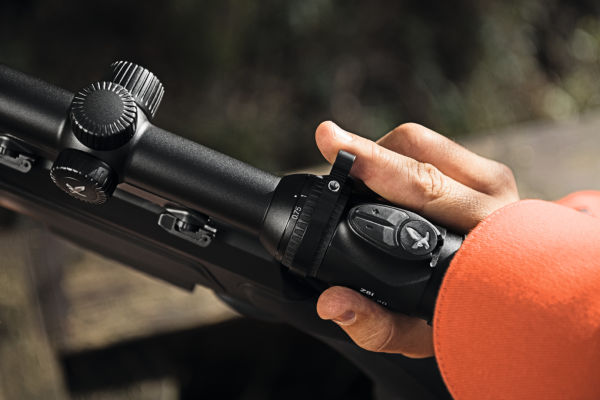
Z8i 0,75-6x20
Der Drückjagdspezialist mit 8fach-Zoom für den schnellen Überblick über das Geschehen: Das leichte Z8i mit VIEWPLUS, der neuen 0,75fach-Vergrößerung, bietet ein um 30 % größeres Sehfeld.
Tradition or technology?
“Hahn in Ruh” (which means “trigger at rest”) announced by the hunting horns in former times signals the end of the hunt. Today, an alarm set on your smartphone serves the same purpose. Now it is time to retrieve the game and bring it to the formal meeting place, where a warm soup is already waiting for hungry shooters and drivers. On most hunts, a time set by the hunting management replaces the traditional end signal. Technology does the trick. Of course, technology replaces some traditions to a certain extent, but it also makes hunting safer.
Top priority: safety
Dogs wear tracking collars, so you can find them quickly and care for them in case of injury. If the temperature is too warm, the display of the game is only done in a symbolic way in order to quickly cool the precious harvest and ensure its quality. Silencers on the rifles protect our hearing and that of our four-legged friends. We no longer leave innards in the forest, but adequately dispose of them, not least because of the current problem of African swine fever (ASP).


Blowing the traditional hunting horn: from the start of the hunt to the “Halali”
Nevertheless, we hope that some traditions, such as those of hunting signals, will be preserved for a long time to come, even though they have almost completely disappeared in practice. In the beginning, the melody for the „start of the hunt“ sounds. After the horns have honored the prey on display and the successful hunters have received small symbolic tree branches, which they wear on the right side of their hats, it is again the horn that ends the hunt with the signal “Hunt over and Halali”.
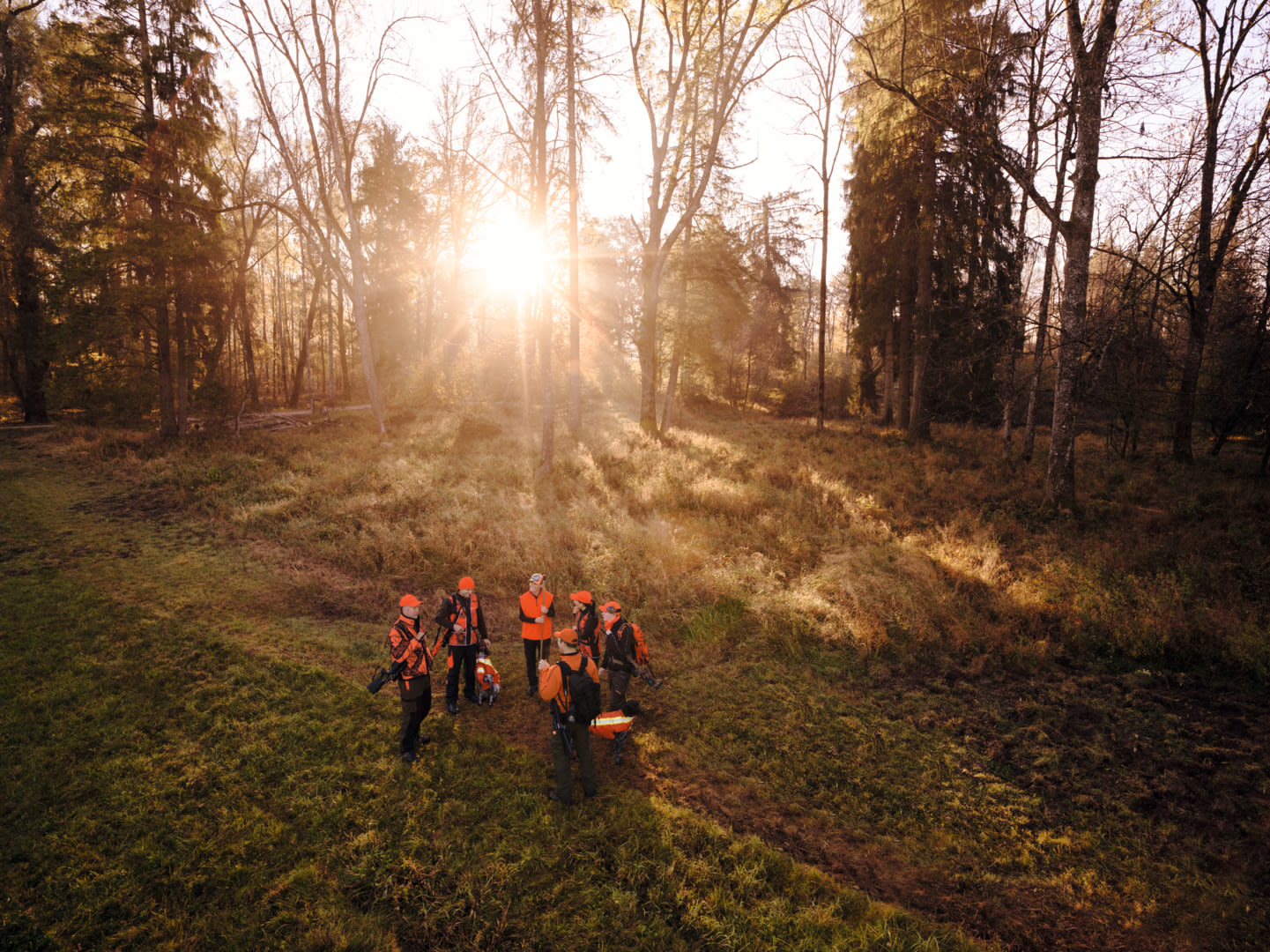
Last but not least: the tracking of wounded game
While the official part of the hunt is now over and most of the shooters are on their way home, the work for the search teams is just beginning. I myself have been assigned to tracking with my dog on many driven hunts. Centrally coordinated we track party leaders often make our way back into the forest without the shooter. We control every shot and check every alleged miss very carefully. For miles and sometimes into the darkness we follow the dog, in order to find wounded game as quickly as possible. In most cases, we are successful. It is an indescribable feeling to stand with your dog at the found animal released from pain. The pride about the performance of the dog, the respect for the hunted animal and the certainty to have ended suffering give me (and probably many others) the strength to do this kind of work. The bland aftertaste that unfortunately not every animal can be found remains after every unsuccessful search.
Even if the appreciation of this work, which is in my opinion indispensable, is rather low from some hunters, the driven hunt is only finished when the last open tracking mission is completed.

About me:
Maximilian Busenius -
better known as The.Passionist
Influenced by my father who has also been my hunting mentor, I have been drawn to hunting for as long as I can remember. As I have always been very interested in the forest and its wildlife, I am now studying Forest Sciences and Forest Ecology for my Master's degree to turn my passion into a profession. As a keen dog handler, it is working with dogs that gives me the greatest pleasure when hunting. To bring hunting closer to others, I share my hunting experiences on YouTube and Instagram.
Happy and satisfied - after a driven hunt in the “Dahlener Heide”, I am taking a break with my two Little Münsterlanders (left: male Dino, right: female Sam - half siblings).

Intended Use
Driven hunting
Join the Hunt!
Feel the excitement and camaraderie of driven hunting with our exclusive products and captivating stories. Whether you’re a seasoned hunter or just starting out, our website has something for everyone. Dive into the world of driven hunting today!
